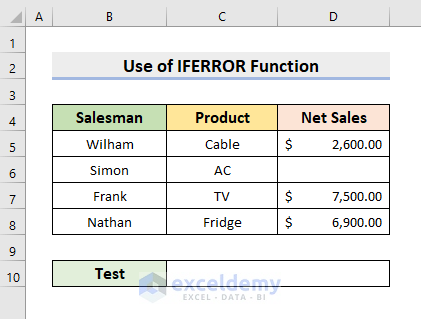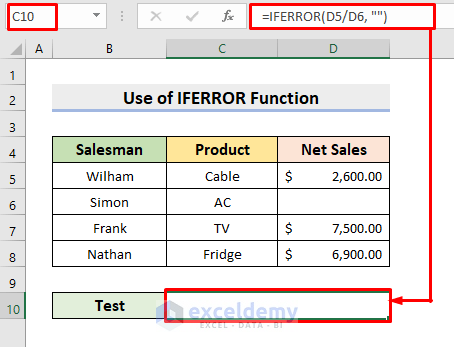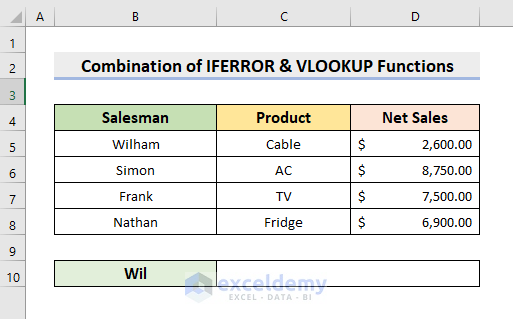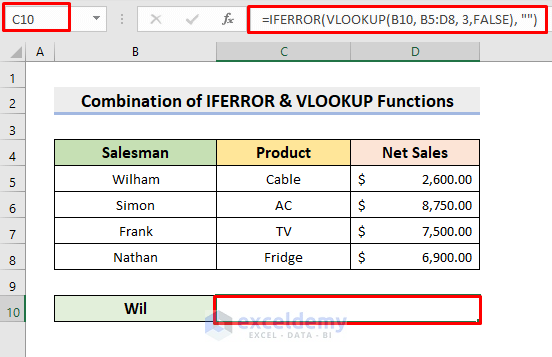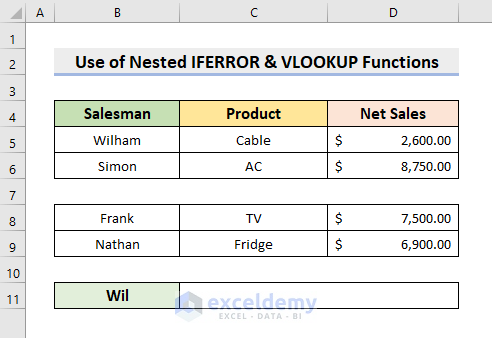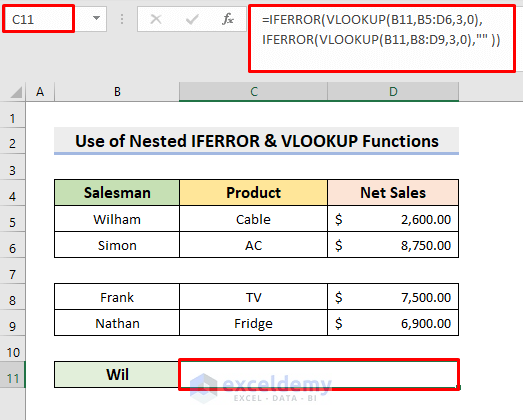Microsoft Excel is a powerful software. We can perform numerous operations on our datasets using Excel functions and features. Excel provides built-in functions and they help us on a daily basis. The IFERROR function is one of them. This function tests whether an expression is an error or not. In this article, we’ll show you 3 practical examples of the Excel IFERROR function to Return Blank Instead of 0.
Introduction to Excel IFERROR Function
The IFERROR function tests an expression to see whether it returns an error value. If the expression returns an error, it’ll give a specified output. But if the expression is not an error, it’ll return the value of the expression itself. The arguments are: value, value_if_error.
Here,
value: The expression that will be tested for an error.
value_if_error: The function will return this value if found error.
Excel IFERROR Function to Return Blank Instead of 0: 3 Useful Examples
The IFERROR function is very effective when we have a large dataset that may contain error expressions. Using this function we can save a lot of time. Otherwise, we’d have to find the errors annually which is a tiresome job. This article will show examples of the IFERROR function to return blank instead of 0.
1. Return Blank Instead of 0 Using IFERROR with Some Formulas
In our first example, we’ll use IFERROR with a simple formula. To illustrate, we’ll use a sample dataset as an example. For instance, in the following dataset, we’ll divide the D5 cell value by the D6 cell value. But D6 is empty. So the division output will be an error. In this case, we’ll apply the IFERROR function to return a blank. Therefore, follow the steps below to perform the task.
STEPS:
- First, select cell C10.
- Then, type the formula:
=IFERROR(D5/D6, "")- Afterward, press Enter.
- Thus, it’ll return a blank cell.
- Look at the below picture to understand better.
2. Combine Excel IFERROR & VLOOKUP Functions to Get Blank Instead of 0
The VLOOKUP function looks for a particular value in the specified range. Then, it retrieves a value from the mentioned column if the match is found. Here, we’ll combine IFERROR & VLOOKUP functions to get a blank instead of 0. In the following dataset, we’ll search for Wil in the range B5:D8. If it’s found in the range, we’ll retrieve the 3rd column value. Otherwise, it returns a blank cell. So, learn the steps to carry out the operation.
STEPS:
- Firstly, choose cell C10.
- Here, insert the formula:
=IFERROR(VLOOKUP(B10, B5:D8, 3,FALSE), "")- After that, press Enter.
- Hence, you’ll get a blank cell as Wil is not in the range.
3. Apply Nested IFERROR with VLOOKUP for Returning Blank In Excel
In our last example, we’ll use multiple IFERROR & VLOOKUP functions to form a nested formula. In the below dataset, we’ll search for Wil in the range B5:D6 and B8:D9. Hence, learn the process to perform the task.
STEPS:
- First of all, select cell C11.
- Type the formula:
=IFERROR(VLOOKUP(B11,B5:D6,3,0),IFERROR(VLOOKUP(B11,B8:D9,3,0),"" ))- Press Enter afterward.
- You’ll get the blank cell finally.
Read More: How to Use Multiple IFERROR Statements in Excel
Download Practice Workbook
Download the following workbook to practice by yourself.
Conclusion
Henceforth, you will be able to use the Excel IFERROR function to Return Blank Instead of 0 following the above-described examples. Keep using them and let us know if you have more ways to do the task. Don’t forget to drop comments, suggestions, or queries if you have any in the comment section below.
Related Articles
- How to SUM with IFERROR in Excel
- How to Use IF and IFERROR Combined in Excel
- Excel ISERROR vs IFERROR Functions
- How to Use Conditional Formatting with IFERROR in Excel
<< Go Back to Excel IFERROR Function | Excel Functions | Learn Excel
Get FREE Advanced Excel Exercises with Solutions!